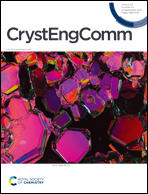Up-conversion luminescence properties and temperature sensitivity of AgBi(MoO4)2:Yb3+/Er3+/Ho3+/Tm3+ phosphors
Abstract
This work begins with a study of the synthesis of multi-color luminescence phosphors, which is followed by a discussion of the temperature sensitivity of AgBi(MoO4)2:Yb3+/Er3+. Uniform and approximately spherical particles of AgBi(MoO4)2-based phosphors were prepared by a simple one-step hydrothermal method without adding any surfactant. We obtained a series of rich green, yellow, blue, and white luminescence phosphors by doping Ln3+ (Ln3+ = Yb3+, Er3+, Ho3+, Tm3+) into the AgBi(MoO4)2 matrix, and an analysis of various correlative factors was made, especially for the amounts of doping ions. Furthermore, the investigation of the temperature sensitivity of AgBi(MoO4)2:Yb3+/Er3+ revealed that the fluorescence intensity becomes lower with increasing temperature from 323 to 573 K. The fluorescence intensity ratio (FIR) of the two thermal coupling energy levels (2H11/2, 4S3/2) of Er3+ was calculated, and the absolute sensitivity of the obtained phosphor reached a maximum value of 1.32% K−1 at 463 K, as obtained by fitting the FIR as a function of temperature, which is a relatively high level compared with other related materials. This material is expected to be used as a highly sensitive FIR thermometer.



 Please wait while we load your content...
Please wait while we load your content...